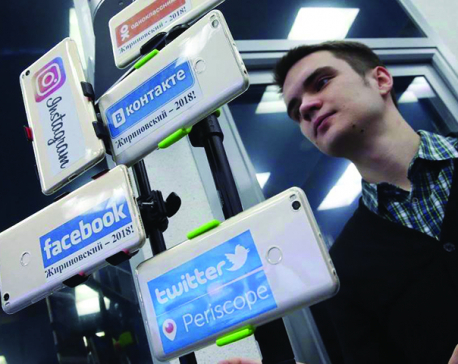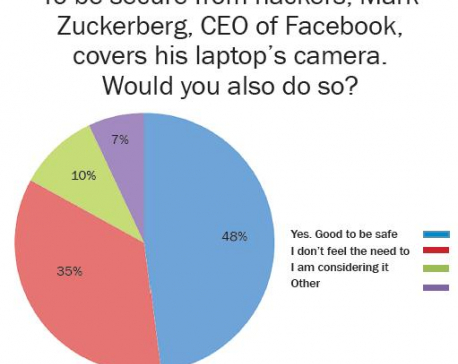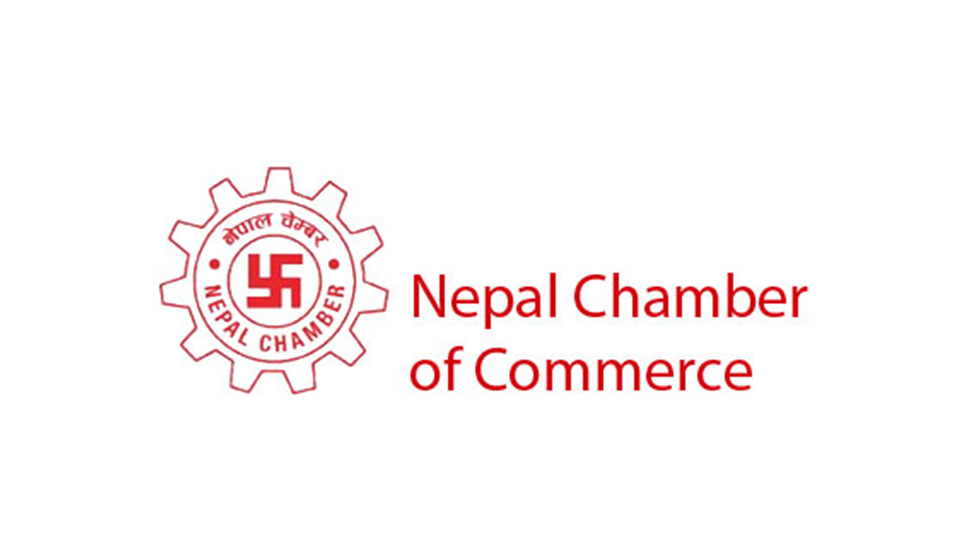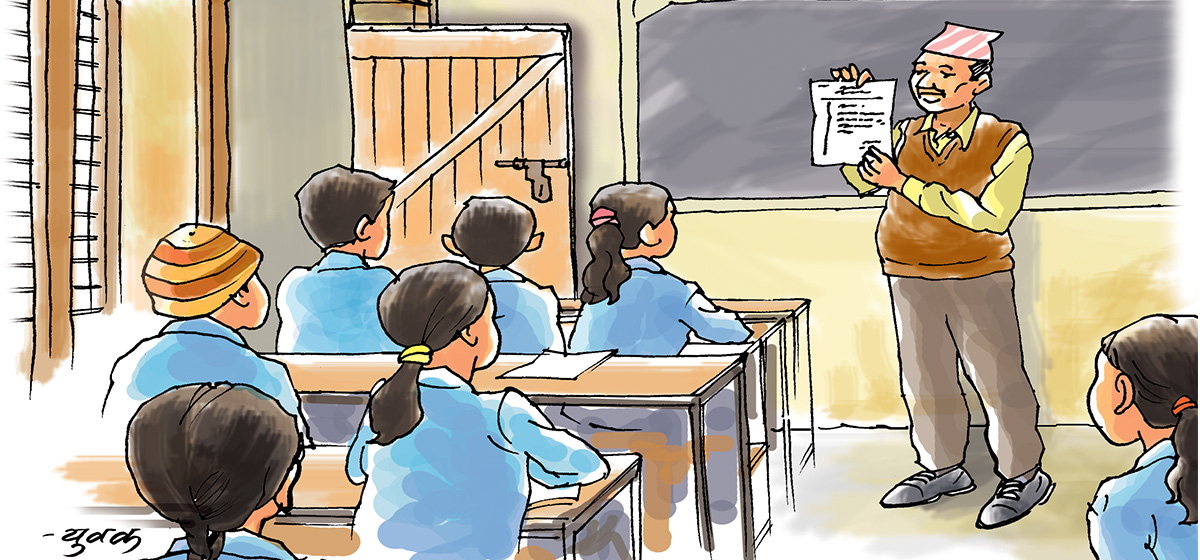
OR

'Why head to the store when you could simply create your outfits right at home with the touch of a button?’ asked a tech discovery website recently.
The article was featuring the idea behind London-based startup Kniterate, which has developed what they are calling “the 3D printer for knitwear.” Indeed thanks to them, the idea of printing out your clothes isn’t inconceivable anymore.
And this is only one example of the many fascinating projects being explored via this technology.
As we stand 3D printing does look well set on transforming the global supply chain by changing the way things are produced. But as eccentric foreign companies play around with the possibilities of 3D printing and make staggering progress by making the likes of customized vehicles, five-story buildings and even a replica of Vincent Van Gogh’s ear, where do we stand?
As it happens, there are seven 3D printers in our country as well. Monitored by the Robotics Association of Nepal (RAN), there are five within the Lalitpur area, one in Kathmandu University, and one outside the valley in Pokhara. One would assume the presence of this seemingly boundless technology would create much wild hype and hoopla but more often than not, Bikrant Karki, Joint Secretary of RAN and their five-member team are found quietly engrossed in their work.
“The word of the possibilities in this room with the 3D printer is certainly yet to spread among the masses. Personally though, despite the fact we are all engineers, we have begun identifying ourselves as makers. In the last four years since we first became acquainted with the technology, we have become very passionate about creating, designing, and fixing,” says Karki.
The RAN team use information available around open sources on the Internet to teach themselves the required skill set to operate their 3D printers. In partnership with Nepal Communitere they even upgraded their equipment last year and while 2015 was a tumultuous one for all Nepalis, Karki recalls how innovation had soared.
“The dire situation really forced us to come up with creative ideas to solve our problems. There was a need to be faster and more efficient so we turned to various technologies. From drones to 3D printers, we got an opportunity to showcase their potentials,” shares Karki.
There were instances where they were printing out supplies for foreign doctors who had come for the relief efforts. Since they didn’t want to be burdened with equipments such as light frameworks during their long trips to remote areas, they had turned to 3D printers for custom designs and instant supply. Some instances were even as minor as water-clogged roads. While on their way with their own relief effort, the RAN team had discovered that several main water pipes had been damaged by the earthquake causing quiet the nuisance for the locals. So they devised a circular plastic ring that could help redirect the water flow. A process that could have taken days if not weeks, if outsourced to a factory, was finished in matter of hours thanks to the 3D printer. On their second trip to the disaster stuck areas, they enlisted the help of the locals to repair the broken pipes.
Bikash Gurung, Secretary of RAN, explains, “3D printing process allows accessibility to creation at lower rates and at much quicker pace. If you can imagine it, you can very well make it. It’s an advantage that, if effectively used, will bring about amazing results for various other social sectors as well. Its benefits are far from limited to humanitarian efforts.” This is a message that they are keen to spread among the masses as well.
The tech and engineering circles seem well aware and even excited about the prospects of 3D printing in Nepal’s future. Several students involved in the faculty, especially those from the architecture field, have been approaching RAN to build models for their projects. The students are given access to the machine and the necessary material at Rs 50 per gram. This has enabled them to manifest their ideas in 3D, thus elevating education to a whole new level.
Bijan Maharjan talks about the excitement of seeing a 3D printed mug in one of their classes. The product was one of the student’s and the quality of it had fascinated and impressed everybody. This hadn’t only elevated Maharjan’s interest in the subject, but it actually gave him an idea for an upcoming business venture.
“I have plans to shortly open a gaming cyber and we wanted to display models of the characters there. Initially, the idea was to approach sculptors but now we are more interested in the 3D printer. We have already started our trials. If possible, we would also like to sell these 3D printed models,” says Maharjan.
Gurung also talks about a group that is collaborating with them to design chocolate molds. The results were so impressive that they have initiated a business plan around it. Thus, Gurung, for one, confidently declares that in a year’s time 3D printing will have a big role to play in Nepal’s start up and entrepreneurial scene. It is going to take some calibration in regards to material supply, cost, size and so on but those familiar with the technology are hopeful.
Over at Hospital and Rehabilitation Center for Disabled Children (HRDC) in Banepa, Director Bikash Man Singh is rooting for progress in this field. Various countries, even those in conflict, have incorporated 3D printed prosthetics to assist their disabled patients. Singh wants the same for those at his center as well so he has been in talks with RAN for almost a year now.
“We have been manually making our prosthetics and it is very time consuming. But there are also issues with functionality, finishing and looks of the product. 3D printers give us hope to overcome these challenges. This is about providing better care and facilities to our disabled patients. With time, this technology may even make treatment more affordable,” concludes Singh. He suspects it will take another year to start this project. Though simultaneously other doctors have been working on a couple medical projects as well. Though they are reluctant to give details on the matter, they assure us that the results of the project shall eventually be made public.
“3D printing is still relatively gathering grounds in our country but it is a start,” says Karki reflecting on the projects so far. “We are constantly designing and trying to improve our ability to optimize the use of this technology. We certainly have plans to take its use outside our office to people from other sectors as well. It should be interesting to see how the future unfolds.”
This email address is being protected from spambots. You need JavaScript enabled to view it.">priyankagurungg@gmail.com
You May Like This

Tech vs democracy
In an age when most people get their news from social media, mafia states have had little trouble censoring social-media content... Read More...

Nepal’s tech future
Technology has become an integral part of our lives. People are increasingly tech savvy and dependent on technology. With a... Read More...

Tech Poll
To be secure from hackers, Mark Zuckerberg, CEO of Facebook, covers his laptop’s camera. ... Read More...







Just In
- Shrestha nominated as Chairman of NCC's Advisory Council
- Take necessary measures to ensure education for all children
- Nepalgunj ICP handed over to Nepal, to come into operation from May 8
- Nepal to gift two elephants to Qatar during Emir's state visit
- NUP Chair Shrestha: Resham Chaudhary, convicted in Tikapur murder case, ineligible for party membership
- Dr Ram Kantha Makaju Shrestha: A visionary leader transforming healthcare in Nepal
- Let us present practical projects, not 'wish list': PM Dahal
- President Paudel requests Emir of Qatar to help secure release of Bipin Joshi held hostage by Hamas



_20240423174443.jpg)







Leave A Comment